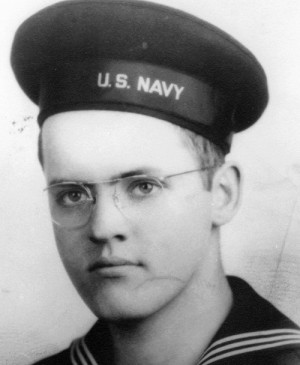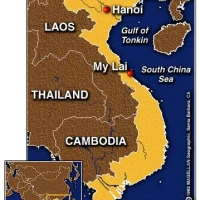THIS WEEK IN WORLD WAR II
The Battle of the Coral Sea
It is early May 1942, the first modern naval engagement is about to begin between the Imperial Japanese Navy and the Naval and Air Forces of the United States and its ally, Australia. It will prove to be the first action in which aircraft carriers engaged each other and the first in which neither side’s ships sighted or fired directly upon each other. Why? Because it was the first air-naval battle in history. The carriers allows each other planes to take off from the decks and do the battling.
The battle took place near Tulagi of the Solomon Islands and was known as the Battle of the Coral Sea.
In the end, the Japanese would lose 92 and the Americans 69 of their warplanes. The Americans also lost the USS Lexington. Known as the Blue Ghost for its lack of camouflage, the carrier Lexington suffered extension aerial damage and eventually had to be sunk by its own crew. Two hundred sixteen crewmen were lost as a result of the Japanese aerial bombardment.

United States Navy aircraft carrier Lexington explodes on 8 May 1942, several hours after being damaged by a Japanese carrier air attack.
The Japanese would occupy all of the Solomon Islands; however the cost in experienced pilots and aircraft carriers was so great that Japan had to cancel its expedition to Port Moresby, Papua as well as other South Pacific target.
|
|||||||
| Belligerents | |||||||
|---|---|---|---|---|---|---|---|
| Commanders and leaders | |||||||
| Strength | |||||||
| 2 fleet carriers, 9 cruisers, 13 destroyers, 2 oilers, 1 seaplane tender, 128 carrier aircraft. |
2 fleet carriers, 1 light carrier, 9 cruisers, 15 destroyers, 5 minesweepers, 2 minelayers, 2 submarine chasers, 3 gunboats, 1 oil tanker, 1 seaplane tender, 12 transports, 127 carrier aircraft. |
||||||
| Casualties and losses | |||||||
| 1 fleet carrier scuttled, 1 destroyer sunk, 1 oiler sunk, 1 fleet carrier damaged, 69 aircraft destroyed. 656 killed |
1 light carrier sunk, 1 destroyer sunk, 3 small warships sunk, 1 fleet carrier damaged, 1 destroyer damaged, 2 smaller warships damaged, 1 transport damaged, 92 aircraft destroyed. 966 killed |
||||||





 Check out my other blog
Check out my other blog I'M PUBLISHED
I'M PUBLISHED I'm Published Again
I'm Published Again









I have not heard of this yet it is so important considering the history. I think, sometimes, when the media covers WW2 or others speak of it, they mostly talk about Europe but tend to speak of Japan and the South pacific second unless it is Pearl Harbour or the bombing of Hiroshima and nagasaki
LikeLike
I agree. Definitely more about Europe
LikeLike
US Navy in WW2:
http://www.worldwarphotos.info/gallery/usa/us-navy/
LikeLike
Thanks for sharing.
LikeLike